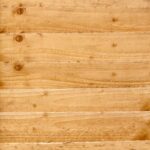Are you looking to give your woodwork a fresh new look with a fresh coat of paint? Whether it’s your cabinets, furniture, or trim, knowing how to prepare woodwork for repainting is crucial in achieving a professional and long-lasting finish. Proper preparation not only ensures a smooth and flawless appearance but also helps the paint adhere better, ultimately extending the lifespan of the new finish.
Before diving into the repainting process, it’s important to assess the current condition of the woodwork. This involves checking for any damage, wear and tear, or previous finishes that need to be addressed before proceeding with painting. Understanding the importance of proper preparation will set the stage for a successful repainting project and prevent any potential issues down the line.
The process of preparing woodwork for repainting involves several key steps such as cleaning and removing previous finishes, sanding and smoothing the surface, filling and repairing any imperfections, applying a primer, choosing the right paint and tools, as well as proper application techniques for a smooth finish. Each step plays a critical role in achieving a professional result that will revitalize your woodwork.
Assessing the Condition of the Woodwork
Before repainting woodwork, it is important to thoroughly assess the condition of the surface. This step is crucial in determining the extent of preparation needed before applying a new coat of paint. Here are some key considerations when assessing the condition of the woodwork:
- Look for signs of damage or deterioration such as cracks, peeling paint, rot, or mold. Addressing these issues before repainting will ensure a longer-lasting and more attractive finish.
- Check for any existing finishes or coatings that may need to be removed before repainting. This includes old layers of paint, varnish, or stain that could affect the adhesion of the new paint.
- Examine the wood for any structural issues such as warping, splitting, or loose joints. These issues should be repaired before proceeding with repainting to prevent further damage.
Once you have carefully assessed the condition of the woodwork and identified any areas that require attention, you can move on to the next steps in preparing the surface for repainting.
Remember that thorough assessment and proper preparation are essential for achieving a professional-looking and long-lasting finish when repainting woodwork.
Cleaning and Removing Previous Finishes
Assessing the Existing Finish
Before beginning the cleaning and removal process, it’s important to assess the existing finish on the woodwork. Determine if there are multiple layers of paint, varnish, or other coatings. It’s essential to identify what type of finish is present as this will dictate the best method for removal.
Choosing the Right Cleaning Method
There are various methods for cleaning and removing previous finishes from woodwork, including chemical strippers, heat guns, and sanding. Each method has its own advantages and disadvantages, so it’s important to choose the right one based on the type of finish and condition of the wood. Chemical strippers are effective for removing multiple layers of paint, while heat guns can be used to soften old varnish or paint for easier removal.
Protecting Yourself During Removal
When using chemical strippers or sanding, it’s crucial to protect yourself with gloves, goggles, and a mask to avoid inhaling potentially harmful fumes or dust. Proper ventilation in the work area is also important when using chemical strippers. Taking these safety precautions ensures that you can effectively clean and remove previous finishes from woodwork without risking your health.
Sanding and Smoothing the Surface
Choosing the Right Sandpaper
Before you begin sanding, it’s crucial to select the right type of sandpaper for the job. Coarse-grit sandpaper, such as 60 or 80 grit, is great for removing old paint or finish. Medium-grit sandpaper, around 120 grit, is ideal for smoothing out any rough areas left by the coarse-grit paper. Finally, fine-grit sandpaper, typically 220 grit or higher, is perfect for achieving a smooth surface before painting.
Using the Correct Sanding Technique
When sanding woodwork in preparation for repainting, it’s important to use the correct technique to avoid damaging the surface. Always sand in the direction of the wood grain to prevent unsightly scratches or marks. Apply even pressure and use long, smooth strokes with the sandpaper to achieve an evenly sanded surface.
Checking for Smoothness
After sanding, it’s essential to thoroughly inspect the woodwork surface for any remaining rough patches or imperfections. Run your hand over the entire area to feel for any unevenness. Additionally, examine the woodwork under a bright light to catch any missed spots that may need further attention.
By following these guidelines on how to prepare woodwork for repainting through proper sanding and smoothing techniques, you can ensure a flawless canvas for your new coat of paint.
Filling and Repairing Any Imperfections
When preparing woodwork for repainting, it is crucial to address any imperfections or damage on the surface of the wood. This step is essential for achieving a smooth and professional-looking finish. Here are some important steps to follow when filling and repairing any imperfections on your woodwork:
- Assess the extent of the damage: Before proceeding with any repairs, carefully assess the condition of the woodwork. Look for cracks, holes, dents, or other imperfections that need to be addressed.
- Choose the right filler: Depending on the type and size of the imperfection, select an appropriate filler product. For small nail holes or minor cracks, a lightweight spackling compound can be used. For larger holes or gaps, consider using a two-part epoxy wood filler.
- Apply the filler: Follow the manufacturer’s instructions to properly apply the filler to the damaged areas. Use a putty knife to fill in holes and smooth out any uneven spots. Allow the filler to dry completely before sanding.
By following these steps, you can effectively repair any imperfections on your woodwork before repainting. Taking the time to fill and repair damaged areas will ensure that your final paint job looks seamless and flawless.
Remember that proper preparation is key when it comes to achieving a high-quality paint finish on woodwork. By addressing any imperfections before repainting, you can ensure a professional result that enhances the overall appearance of your wood surfaces.
Applying a Primer for Better Adhesion
When repainting woodwork, one of the most crucial steps in the preparation process is applying a primer. A primer helps to create a smooth and even base for the paint to adhere to, ensuring better durability and longevity of the new finish. Additionally, it can also help to prevent any stains or tannins from bleeding through the new paint.
Before applying a primer, it is important to ensure that the surface of the woodwork is clean and free from any dust, dirt, or debris. This can be achieved by using a damp cloth or sponge to wipe down the surface, followed by thoroughly drying it.
The next step is to choose the appropriate type of primer based on the type of wood and previous finishes. For example, if you are painting over varnished woodwork, using a specific bonding primer designed for slick surfaces would be ideal.
In addition to improving adhesion, a quality primer can also enhance the overall appearance of the final finish. It can help to even out any imperfections on the surface and provide a more consistent base color for better coverage with fewer coats of paint. By taking the time to properly apply a primer before repainting woodwork, you can achieve professional-looking results that will last for years to come.
| Benefits of Applying Primer | Importance |
|---|---|
| Improves adhesion of new paint | Creates smooth and even base |
| Prevents stains from bleeding through | Enhances appearance of final finish |
Choosing the Right Paint and Tools
When repainting woodwork, one of the most crucial steps is choosing the right paint and tools for the job. This will ensure that the finished result not only looks great but also lasts longer. The first thing to consider when selecting paint is whether to use oil-based or water-based paint. Oil-based paints are known for their durability and smooth finish, while water-based paints are easier to clean up and have less odor.
After deciding on the type of paint, it’s important to choose the right tools for application. For painting woodwork, high-quality brushes and rollers are essential. The size and type of brush or roller will depend on the specific woodwork being painted, so it’s important to select ones that are suitable for the job at hand.
In addition to brushes and rollers, other tools such as painter’s tape, drop cloths, and sandpaper are also essential for a successful painting project. Proper preparation of these tools before starting will make the painting process go much more smoothly. Cleaning brushes and rollers thoroughly before use can prevent old paint from ruining a new finish, while ensuring that sandpaper is in good condition will help achieve a smooth surface for painting.
| Choosing Paint | Choosing Tools |
|---|---|
| Oil-Based or Water-Based | High-Quality Brushes and Rollers |
| Durability vs Ease of Clean Up | Painter’s Tape, Drop Cloths, Sandpaper |
Proper Application Techniques for a Smooth Finish
Once you have properly cleaned and prepared the woodwork for repainting, it’s important to focus on the application techniques in order to achieve a smooth finish. One key technique is to apply the paint in thin, even coats. This prevents dripping and ensures that the paint dries evenly. Additionally, using high-quality brushes or rollers can make a significant difference in the final outcome.
Another important technique is to follow the grain of the wood when applying the paint. This helps to avoid streaks or brush marks that can be visible once the paint has dried. It’s also crucial to allow each coat of paint to fully dry before applying the next one. Rushing this step can lead to an uneven finish and may require additional sanding and touch-ups.
Proper ventilation is essential during the painting process, especially if you are using oil-based paints or primers. Working in a well-ventilated area not only ensures your safety but also helps the paint to dry properly without any issues like bubbling or blistering. Finally, taking your time and being patient throughout the painting process will ultimately result in a smooth and professional-looking finish.
Tips for Maintaining the Repainted Woodwork
In conclusion, properly preparing woodwork for repainting is crucial for achieving a smooth and long-lasting finish. By following the steps outlined in this article, you can ensure that the new paint adheres well to the surface and that any imperfections are addressed before applying the final coat.
Assessing the condition of the woodwork is the first step in this process, as it will help determine what cleaning and preparation methods are needed. Whether dealing with old or new woodwork, understanding how to remove previous finishes and properly sanding and smoothing the surface are essential for achieving a professional result.
Once the woodwork has been prepared, choosing the right primer, paint, and tools for the job is crucial. By following proper application techniques and taking care during the painting process, you can achieve a smooth finish that will last for years to come.
Lastly, by following our tips for maintaining repainted woodwork, you can keep your newly painted surfaces looking fresh and vibrant for years to come. Remember, taking the time to properly prepare woodwork for repainting will result in a finish that is not only visually appealing but also durable.
Frequently Asked Questions
How Do You Prepare Previously Painted Wood for Repainting?
To prepare previously painted wood for repainting, start by cleaning the surface with a mild detergent and water to remove any dirt or grease. Then, sand the wood to create a smooth surface for the new paint to adhere to. After sanding, wipe down the wood with a tack cloth to remove any dust.
Can I Paint Over Painted Wood Without Sanding?
Yes, you can paint over painted wood without sanding if the existing paint is in good condition. However, it’s still recommended to clean the surface and apply a bonding primer before painting to ensure better adhesion of the new paint.
How Do You Prep Trim for Repainting?
When prepping trim for repainting, start by removing any dirt, dust, or grime by cleaning it with a solution of mild detergent and water. Use a sponge or cloth to scrub the trim thoroughly.
Next, sand the trim lightly to create a smooth surface for the new paint to adhere to. After sanding, wipe down the trim with a tack cloth before applying primer and then paint.

Hi everyone! I’m a woodworker and blogger, and this is my woodworking blog. In my blog, I share tips and tricks for woodworkers of all skill levels, as well as project ideas that you can try yourself.





